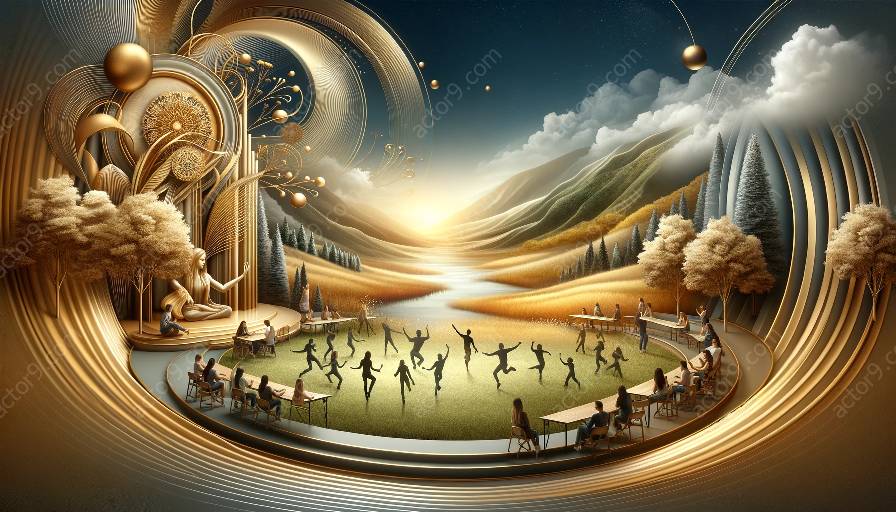Physical theatre, a unique form of performance that integrates the body as the primary means of artistic expression, poses both challenges and opportunities for educators in higher education. In this article, we'll delve into the multifaceted world of teaching physical theatre and how it aligns with the broader concept of physical theatre in education.
The Essence of Physical Theatre
Physical theatre, often characterized by its emphasis on the body, movement, and gesture, presents a distinctive approach to storytelling and expression. It merges various disciplines such as dance, acting, and mime to create a compelling narrative through non-verbal communication and bodily exploration. This interdisciplinary nature of physical theatre offers a rich canvas for educators to engage with students in a holistic manner, nurturing their creativity and physical prowess.
Challenges Faced by Educators
Teaching physical theatre in higher education comes with its set of challenges. Eliciting a deep understanding and appreciation for physical expression among students requires a pedagogical approach that balances technical training with artistic sensibilities. Educators must navigate the complexities of imparting physical skills while fostering an environment that encourages risk-taking and experimentation. Additionally, adapting to diverse learning styles and physical abilities within the student cohort presents an ongoing challenge.
Exploring Opportunities
Amidst the challenges, teaching physical theatre presents a myriad of opportunities for educators. It cultivates a sense of collaborative creativity, as students engage in ensemble work and collective creation of movement-based performances. Moreover, physical theatre serves as a platform for social and cultural exploration, enabling students to delve into the historical, political, and societal aspects of physical expression. This immersive experience fosters an appreciation for diverse perspectives and helps students develop critical thinking skills through embodied learning.
Impact on Education
Physical theatre in education transcends the boundaries of traditional pedagogy, offering a dynamic approach to learning. Through physical storytelling, students can connect with their innate physicality, enhancing their emotional intelligence and empathy. This form of artistic expression also contributes to the development of non-verbal communication skills, body awareness, and spatial understanding. By integrating physical theatre into higher education, institutions can create a nurturing environment that celebrates the holistic growth of students.
Embracing the Future
As the landscape of performing arts education evolves, there is a growing recognition of the value of physical theatre in higher education. Embracing emerging technologies, interdisciplinary collaborations, and global perspectives can further enrich the teaching of physical theatre. Educators are poised to harness the power of physical theatre to instill a sense of embodiment, creativity, and cultural awareness among the next generation of performing artists and scholars.




































